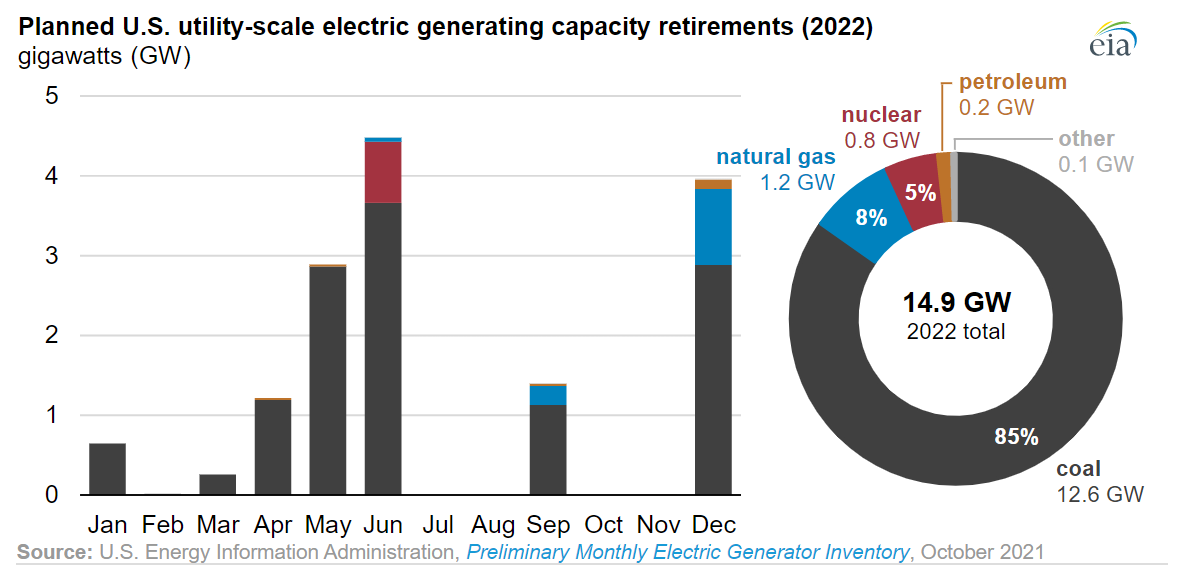Coal to Represent 85% of Electric Generating Capacity Retirements in 2022

January 12, 2022 - Coal will account for 85% of U.S. electric generating capacity retirements in 2022, according to analysis from the U.S. Energy Information Administration (EIA).
Operators have scheduled 14.9 GW of total generating capacity to retire this year. Some 12.6 GW will reflect coal plant retirements, followed by natural gas (1.2 GW or 8%) and nuclear (0.8 GW or 5%), according to EIA’s latest inventory of electric generators.
Coal capacity retirements averaged 11 GW per year between 2015 and 2020, before slowing to 4.6 GW in 2021. However, based on reporting from operators, EIA said it expects retirements to increase again this year. The capacity expected to retire this year makes up 6% of the coal-fired generating capacity that was operating at the end of 2021.
Most of the plants that make up the U.S. coal fleet were built in the 1970s and 1980s. The largest coal power plant planning to retire is the 1,305 MW William H. Zimmer plant in Ohio. Last July, Vistra–which owns the Zimmer station–announced the plant would shut down five years ahead of its originally planned 2027 retirement date. Zimmer failed to secure any capacity revenues in the May 2021 auction held by grid operator, PJM Interconnection. Zimmer was originally planned to be a nuclear power plant, but the project was scrapped in 1983 when cost estimates rose to $3.1 billion. Converting Zimmer into a coal power plant began in March 1987.
GenOn Holdings-owned Morgantown Generating Station in Maryland plans to retire its two coal-fired units (1,205 MW combined) in June, followed by two of the plant’s six smaller petroleum-fired units in September. The facility consists of two base loaded 624 MW coal-fired steam generating units, four 65 MW oil-fired peaking combustion units, and two 18 MW black start peaking turbines. The two coal-fired units are base-loaded supercritical steam units which went into operation in 1970 and 1971. The four peaking units are General Electric Frame 7 units which went into operation in 1973. And the two black start peaking units are General Electric Frame 5 units which went into operation in 1970 and 1971

EIA said that on the natural gas side, the planned retiring capacity is made up of older steam and combustion turbines, which are less efficient and smaller than many of the newer combined-cycle units.
The largest U.S. natural gas plant planning to retire in 2022 is the Meramec power plant in Missouri, owned by Ameren. Meramec, which has four generating units, was originally a coal-fired plant. Two of the plant’s generators were converted to use natural gas in 2016. These units, as well as the plant’s two coal-fired units, are slated to retire in December 2022.
Nuclear capacity retirements represent less than 1% of the current U.S. fleet. The retiring nuclear capacity comes from one plant, the Entergy-owned Palisades nuclear power facility in Michigan. The single unit, 805 MW facility with a pressurized water reactor supplied by Combustion Engineering entered service at the end of 1971. The retirement of Palisades is a result of low natural gas prices, limited growth in electricity demand, and increasing competition from renewable energy.

